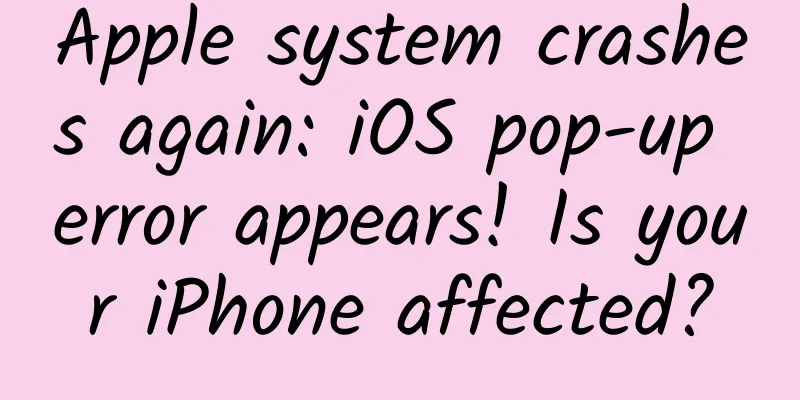Product Operation: How to build a product structure pyramid?

|
If you do marketing for a long time, you will have an illusion. It seems that marketing is bigger than the sky for businesses. But in fact, "product is 1, marketing is 0" If the product is not good, the 1 will not stand. No matter how good the marketing is, or how many zeros are added to the end, it will eventually collapse! It is not enough to have excellent products, but also to plan a reasonable product structure. In this way, your product will look hard, beautiful and fragrant! But product structure planning is a complex issue The difficulty and approach of product structure planning for enterprises of different sizes vary greatly Large enterprises often have multiple business units, each business unit has many product lines, and each product line has multiple brands and products. The product structure planning of such large enterprises is very complex and difficult. Comparatively speaking, small and medium-sized enterprises have fewer product lines, and the planning complexity and difficulty are much smaller. Regardless of the size of the enterprise or the number of product lines, the purpose of product structure planning is Let different products play different roles, achieve the best combination, and jointly maximize product sales. In product structure planning, products are generally divided into three categories, namely, traffic-generating products, profit products and image products. As the name suggests Traffic generation products are responsible for bringing in traffic Profitable products are responsible for contributing profits Image products are responsible for enhancing the image These three products each play different roles, complete different tasks, and together build the company's product structure pyramid. Product Structure Pyramid In this article, we will explain in detail the principles and methods of creating traffic-generating products, profit products and image products. 1. How to make traffic-generating products?1. Principles for creating traffic-generating products1) Traffic-generating products are generally products that are in urgent need of the general public. The purpose of traffic-generating products is to attract traffic to the greatest extent and on the largest scale, and to attract the attention of the audience. Since you want to attract the attention of a wide range of audiences, then this product must be a mass-market product with the widest audience in this category, rather than a niche non-must-have product. For example, fruit stores often hold promotions and use special prices to attract customers, and the fruits they sell are usually the basic ones that are most commonly consumed by families. For example, bananas, oranges, apples, and pears, these fruits are purchased by every household, so using special offers to attract the largest audience can attract the largest number of people. Similar activities also happen when supermarkets open for business, and the most commonly used items for special offers to attract customers are eggs, rice, and flour. 2) The traffic-generating products must have a high cost-effectiveness Traffic-generating products must be sold cheaply and their quality cannot be low. It is precisely because of their high quality and low price that people feel that they are highly cost-effective and the audience cannot help but be attracted. For example, Xiaomi, which pursues the ultimate cost-effectiveness route, basically all of its hardware products are relatively low-priced in the same category, but the configuration and performance are not low, which makes them great value. Take the most typical Xiaomi mobile phone as an example. The original Xiaomi 1 was priced at 1,999 yuan, and its configuration was equivalent to that of a smartphone costing three to four thousand yuan at the time. It sold out as soon as it was launched, and cultivated a huge group of Mi fans for Xiaomi. However, Xiaomi can still make money while not making money here because it has a very rich product line, hardware, software and services, and a huge user base. 3) There is a correlation between the traffic generation products and the backend products The products used to attract traffic should be your main products, which should be of the same or similar categories as the profitable products and image products you will sell later, or they should be low-end versions of the back-end profitable products. Traffic-generating products attract audiences with certain needs. If the products sold on the back end are very different from the categories of traffic-generating products, the audience may not have demand for the back-end products, and even if they do have demand, their trust in them will be low. For example, a fruit store should use the most popular fruits to attract customers, rather than using eggs just because the supermarket’s opening special offer is effective. Although fruit shops can attract many people by using eggs, most of the people who buy eggs are middle-aged and elderly people, while most of the people who buy fruit are young people. This leads to a mismatch in the crowd and fails to generate subsequent chain sales. 2. How to create traffic-generating products1) Design free trial products People face various risks when consuming, and free can minimize the risks and costs of people trying. The free strategy is most common in the Internet industry, but it is also widely used in traditional offline industries. For example, training institutions will offer free trial classes in order to attract traffic. In order to attract customers, gyms will offer free private training trial classes. In order to attract customers, 4S stores will offer free test drives. Optical shops will test your eyesight for free. Of course, the Internet industry is the one that has taken the free strategy to the extreme. The most typical example is 360, which subverted the anti-virus software market with free software and then made money from other products after having a huge user base. Almost all Internet products, whether PC software or mobile apps, have a free basic version, or the basic functions of the software are free, but upgraded functions are paid. 2) Design, testing and consulting products People will encounter various problems in work and life, including psychological problems, learning problems, emotional problems, and workplace problems. These problems and troubles make people confused and painful, and people hope that professionals can give them guidance. At this time, you can design testing and consulting products, which can help the audience understand the problems they are facing through testing, and they can get targeted guidance through consultation. Once the audience has trust in the front-end testing and consulting products, they are very likely to consume the profitable products at the back end. For example, companies that do indoor formaldehyde removal and air treatment will launch ultra-low-priced indoor air testing services, charging 99 yuan for formaldehyde testing in new houses. Educational institutions that provide learning ability training will launch a learning ability testing system, which tests children from multiple dimensions such as attention, memory, logic, spatial ability, etc., allowing parents to understand their children's strengths and weaknesses, and to improve training courses in a targeted manner at the back end. Institutions that provide career planning counseling use professional personality tests to attract professionals and launch workplace psychology and skills training courses at the back end. 3) Designing gimmicky products Some brands’ traffic products are themselves their signature products. For example, Xiaomi mobile phone is Xiaomi's signature product, but it is also Xiaomi's traffic-generating product. Xiaomi has attracted a large number of users through its cost-effective mobile phones, and then made profits through Xiaomi stores, advertising revenue sharing, and sales of other Xiaomi ecosystem products. Some brands’ traffic products are gimmick products hyped by the market. For example, Grandpa Zhang’s hollow noodles, which became popular on the TV program “A Bite of China”, Xibei Youmiancun bought out the sales rights of this product in restaurants. Grandpa Zhang’s hollow noodles, which cost a few yuan a bowl, became Xibei’s drainage product. Many people who like noodles flocked to Xibei for this bowl of noodles and ordered many other dishes by the way. 2. How to make profitable products?The so-called profitable products are products that can earn a lot of profits. Profitable products do not necessarily have to have a high profit margin, but rather a large sales volume. While ensuring that the sales volume is large enough and maintaining a reasonable profit margin, the more you sell, the more you earn. Therefore, profitable products are also called main selling products. The design of profit products must comply with the following two conditions: 1. Profit products are upgraded versions of traffic-generating productsTraffic-generating products and profit-generating products are products of the same category, but they are slightly different in configuration and performance. But people all want better products. When customers are choosing and comparing, they find that although the drainage model is cheap and has a good price-performance ratio, when compared with the profit model, they find that as long as they add a little money, the configuration and performance will be significantly improved. At this point, most customers would be inclined to pay a little more for a clearly better product. For example: a course package set up by an early childhood education institution Package 1: 2999 yuan/30 classes; Package 2: 4999 yuan/75 classes, plus 5 free parenting consultations. Package 1 has a low total price and is a traffic-generating product. Although Package 2 is slightly more expensive, it has a significantly higher cost-effectiveness and is more cost-effective. For example, a certain brand of digital camera Model 1, 16x zoom, weighs 350 grams, is 3 cm thick, and is priced at 1,900. Model 2, 32x zoom, weighs 280 grams, is 1.5 cm thick, and is priced at 2,300. Model 2 is only 400 yuan more expensive than Model 1, but its performance configuration is one level higher. The model is sold for more than 1,000 yuan each, and its low price is used to attract customers. But after comparison, I found that model 2 has a higher cost performance and is more worth buying. 2. Profitable products must be in stable supply and cannot be intermittent.Affected by supply chain stability, inventory pressure and limited resources, it is impossible for the traffic-generating products, profit products and image products in the product structure to maintain a long-term, stable and uninterrupted supply. At this time, the supply of traffic-generating models or image models is insufficient, and out-of-stock problems are not a big problem. At most, other products can be replaced. But profitable products have large sales volumes and sell for a long time. Therefore, the supply chain of profitable products must be stable to ensure sufficient supply; it cannot be available sometimes and not available sometimes. For example: McDonald's often doesn't have other burgers, but it always has the Big Mac. Among BMW models, the 1 Series, 5 Series, and 7 Series are often out of stock, but the 3 Series is always available. Bottled and boxed versions of Wanglaoji Herbal Tea are often out of stock, but the red canned version is always available. 3. How to make image products?1. What is an image product?As the name suggests, image products are products used to establish and enhance the brand image. Image products are of high quality, high price and high profit, but because they are at the top of the product structure pyramid, the market is very narrow and the audience is small. Although the price and profit are very high, the sales volume is very small or even no sales volume at all, so they are not the main source of corporate product profits. Its main purpose is to demonstrate brand capabilities and raise brand status. If you pay a little attention, you will find that image products can be seen everywhere in all walks of life on the market. For example, the Apple Watch Edition costs tens of thousands of yuan, entry-level headphones from Sennheiser and Beyerdynamic cost a few hundred yuan, the main selling models cost a few thousand yuan, and some headphones with very few sales and costing tens of thousands of yuan are just image models. The above examples are still image models that will generate sales. Some brands launch image models purely to demonstrate brand capabilities and raise brand status, which will not generate sales at all. For example, the German high-end kitchenware brand Fissler launched a diamond pot with a diamond-inlaid body and a handle made of gold, which is priced at 4.3 million. For example, VERTU, a high-end mobile phone brand under Nokia, launched a purely hand-made Cobra limited edition mobile phone inlaid with 439 rubies and priced at 2.47 million. 2. Why do we need to make image products?As an auxiliary product in the product structure, the image product plays the following roles: 1) Enhance brand image and improve brand quality Image products are like a city’s face projects and landmark buildings. They aim to be bright and beautiful, making people look up to them and regard them with admiration. The brand is able to produce image models, which proves its strong R&D, design and manufacturing capabilities, and proves its brand's style, taste and high grade. 2) Create a comparison effect to boost the main selling products In the product structure, traffic-generating products, profit products and image products cooperate with each other and each plays a specific role. Use low-priced products to attract customers. Because of the anchoring effect, customers expect low prices. At this time, if there are only traffic-generating payments and profit payments, customers will feel that the profit payment is too expensive. Therefore, we need to design high-priced image models and use high prices to adjust customers' minds. Because of the existence of high-priced image-oriented models, low-priced traffic-enhancing models seem too cheap. Cheap products are not good, and they don’t make you feel embarrassed, so don’t buy them. Because of the existence of the high-priced image model, the mid-priced profit model seems not expensive. Don't want to be suckered, so don't buy high-priced products. Don't want to get a bargain, so don't buy low-priced products. The profit of medium-priced products is just right, neither high nor low. 3) Meet high-end needs and cultivate high-end users The high quality and high price of image products can meet some high-end demands and attract a small number of high-end consumer groups to become their customers. It can not only take advantage of their demonstration effect, but also when the brand's main customer base sees that many celebrities are using products of the same brand, it will increase the main customer base's trust and favorability towards the brand. For example, many celebrities are using Huawei phones, although many of them are using the Mate RS Porsche model priced at 10,000 to 13,000 yuan, or the highest-end version of the flagship phone. When people see that these people also use Huawei, they think that Huawei phones are of similar quality to Apple phones. In addition, launching a high-end image model that can stand the test of a company's R&D, design, production, and marketing capabilities will force the company to upgrade its capabilities. Finally, although image products have small sales volumes, they are high priced and have high profits, so they can still make real money for the company. 3. How to make image products?1) Normal over-provisioning version On the basis of profitable product configuration, upgrade the configuration of each aspect of the product by one or two levels. Like the highest-end versions of Apple and Huawei Mate phones. 2) Extraordinary luxury version First, on the basis of profitable product configuration, upgrade the configuration of each link of the product to the highest level that can be achieved. Although this configuration does not bring about an improvement in product performance, or if there is an improvement, consumers cannot perceive it. The second is to completely separate from the product itself, bundle various high-end products or materials with the product, and use the help of wealthy people to enhance the product. Just like Fissler's diamond-encrusted gold pot and VERTU's gem-encrusted mobile phone. 3) High-end co-branded items Launch joint products with high-end or luxury brands, and leverage the momentum of high-end brands to enhance your own brand's status. For example, Huawei launched the Mate RS Porsche model, Adidas launched the Prada model, and Nike launched the Rolex model. The prerequisite for this kind of play is that you have to be a well-known brand. Otherwise, the big brands will think you are LOW and are afraid that it will lower their image, so no matter how much money you give them, they will not be willing to play with you. Summary of this articlePurpose of product structure planning Let different products play different roles, achieve the best combination, and jointly maximize product sales. In product structure planning, products are generally divided into three categories: traffic-generating products, profit products, and image products. Traffic generation products are responsible for bringing in traffic Profitable products are responsible for contributing profits Image products are responsible for enhancing the image 1. How to make traffic-generating products? 1. Principles for creating traffic-generating products; 1) It is a product that is in urgent need of the public; 2) It must have a very high cost performance ratio; 3) It is related to the backend; 2. How to create traffic-generating products; 1) Design free trial products; 2) Design, testing and consulting products; 3) Designing gimmicky products 2. How to make profitable products? 1. It is an upgraded version of the drainage product; 2. The supply must be stable and not intermittent. 3. How to make image products? 1. What is an image product? Products used to build a high-quality brand image 2. Why make image products? 1) Enhance the brand image and improve the brand quality. 2) Create a comparison effect to promote main-selling products. 3) Meet high-end demands and cultivate high-end users. 3. How to make image products? 1) Normal over-provisioning version 2) Extraordinary luxury version 3) High-end co-branded items Author: Liu Guoqiang Source: Liu Guoqiang Demolition Marketing (sslj36) |
<<: Enterprise IP Marketing Operation Guide
>>: Summary of essential tools for new media operations and promotion! (superior)
Recommend
It's terrifying to think about it! Two apps and one minute can make your phone "naked" in front of strangers? ! Police remind →
Sitting far away typing Your phone can hear every...
What are the short video templates for selling products? How to write copy?
Everyone has the same purpose for making money th...
Introduction to the Systematization of Portrait Photography Post-production
Introduction to the systematic entry resources fo...
User Operation | The underlying logic and operation guide of the user churn model!
To do a good job in user operation , the first st...
Virtual operators that are popular but not profitable need to break through by rapidly iterating their products
Originally, the media and industry's attentio...
Why do I feel like there are fewer mosquitoes this year? Is it because of the hot weather? The truth is…
Many people feel that there are fewer mosquitoes ...
Symptoms are similar to those of a cold, and once infected, you carry it for life! It has been more common recently... Be careful!
When it comes to high fever, sore throat, many pa...
BeOS is the operating system that almost killed Apple
[[135855]] In 1997, Apple acquired NeXT, and Jobs...
Technology Morning News | Man-made spacecraft touches the sun for the first time
News Station Photo by Xinhua News Agency reporter...
Are “pure cotton” clothes absolutely natural? Will chemical fiber clothes cause discomfort to the body?
When consumers choose clothing and textiles, mate...
Master the core rules of Tik Tok and create explosive short videos!
What exactly is the structure of a short video? H...
How to make your advertisement popular on Tik Tok?
Everyone knows how popular TikTok is today. If yo...
In ancient times when technology was not well developed, how did silver bills prevent counterfeiting?
As we all know, although the silver note is just ...
How did Bullet Messenger gradually ignite the nerves of the Internet?
This article will start from the product highligh...
Rejecting the middle-aged greasy Toyota's new Asia Dragon also plays sports
According to Toyota's current new car plan, t...









